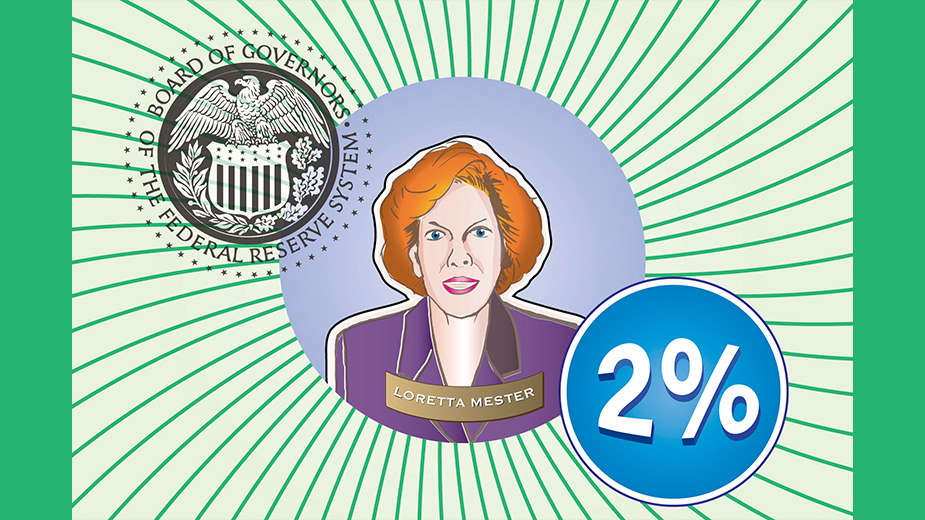Fed VP: Inflation Remains ‘Stickier’ than Expected
HERMITAGE, Pa. – Despite some better-than-anticipated economic indicators, inflation is persisting, a condition driven in part by the continued tight labor market, a Federal Reserve official said Tuesday.
Russell Mills, vice president and senior regional officer for Federal Reserve Bank of Cleveland, was the featured speaker at the Shenango Valley Chamber of Commerce’s 2023 Economic Forecast Breakfast. The event was sponsored by the chamber and Gannon University Small Business Development Center.
Mills’ remarks touched on several factors influencing the economic outlook during the breakfast meeting, which was held at the Avalon at Buhl.
Many of the professionals that do economic forecasting project “a slight contraction” in the U.S. economy this year, with a rebound during the fourth quarter to 0.6% growth, Mills said. Others are more optimistic, such as Goldman Sachs, which is projecting 1.8% growth during the first quarter of 2023.
Despite stronger-than-anticipated top-line numbers, there are signs of weakening across the U.S. economy. “Inflation continues to be stickier than I think any of us thought it would be,” well above the 2% target of the Federal Open Markets Committee, which sets interest rates, Mills said.
Since March 2022, the committee has raised the federal funds rate “from near zero to a target range of 4.5 to 4.75,” raising the funds rate by 25 basis points in January to bring it to the current range, he said. The latest committee’s current projection is that interest rates will peak at 5.1% but that will be updated in March.
“So I imagine these numbers will — I know will – change,” he said. “I don’t know what direction they will change but we’ll see a different projection.”
Real gross domestic product last week was adjusted downward to 2.7% for the fourth quarter of 2022 from an early projection of 2.9%, an adjustment he attributed in part to consumer spending not being as high as anticipated. Industrial production, which in recent years had shot back up to levels comparable to before the COVID-19 pandemic, has been trending downward over the past few months.
The most recent measure of inflation, the Personal Consumption Index, 5.4%, was up a tenth of a percentage point, “not the direction that the Federal Reserve’s hoping to see, obviously,” Mills said. While goods inflation has come down, from 5.1% to 4.7% month over month, services inflation continues to rise, “which is really driving a lot of the inflationary pressures” across the country.
One important aspect to keep in mind when looking at inflation is when people think that there will be inflation, they demand higher wages, he said, “Then it’s sort of the cycle that keeps going,” he said.
The net number of jobs nationally now exceeds that of before the COVID-19 pandemic, with the national unemployment average at a low of 3.4%, he reported. Wage growth is about 6% year over year.
“There’s roughly two job openings for every unemployed person in the U.S.,” he continued. “A lot of firms, once they get workers in the door, they really want to keep them so they’re offering retention bonuses and increased wages,” as well as increasing pay to try to attract workers. He said he has started to hear “some rumblings in Congress” about bipartisanship related to immigration reform, which potentially would provide more workers.
Some regions are doing better than others, he acknowledged. Unemployment in the metropolitan statistical area that includes Mercer County and Mahoning and Trumbull counties in Ohio is 4.9%, “quite a bit elevated compared to the national unemployment rate,” potentially reflecting regional trends, he said. The number of jobs in the MSA is “well below” the total there were before the pandemic.
“The Midwest on the whole isn’t performing as well as some other regions in the U.S. economy,” he said.
Mills pointed to a concerning trend of people leaving the workforce entirely, some because they died though a lot over 55 retired because of health reasons or to serve as caregivers, he said. He also pointed to a “concerning” increase in the number of males ages 25 to 54 – “the largest chunk of the labor force” — leaving the workforce.
“That’s down about 0.7% from where it was prior to the pandemic,” he said. Layoffs and firings are at “historic lows.”
Despite factors including labor shortages and rising interest rates, consumers remain optimistic.
“Consumer spending continues to be extraordinary,” he says. “Since the pandemic, consumer spending on goods has increased 15.8%, which is pretty astounding.” Many people are traveling again, so hotel occupancy rates have rebounded, though Ohio and Pennsylvania remain below pre-pandemic levels. Dining is up overall 1.25% year over year though the activity has declined in Pennsylvania while rising in Ohio, he said.
Looking at the financial markets, he noted that equities are up and volatility has remained low, with the exception of recent weeks, which have been “a little rough.” Treasury yields for one- and three-year terms are higher than for 10- and 30-year instruments. As interest rates rise, bankers report loan demand is down and that they have tightened lending standards, two things that are “probably very related,” he remarked.
One of the “hidden stories” of the pandemic is the number of new small businesses that were created, he said. Many people sold products online during the pandemic and then decided they wanted to open a brick-and-mortar storefront, meeting with “mixed success,” he acknowledged, though that led to a decline on office and retail vacancy rates that had been on the rise.
Mills was optimistic about prospects for the manufacturing sector locally, which remains one of the region’s strengths, he said. He also pointed to the work being done in advanced manufacturing and robotics, another area “that might be growing over the next couple of years.”
Much of what Mills said tracked with what businesses are seeing locally, David Grande, chairman of the chamber’s board of directors, said.
“We don’t really see a lot of business closures. We still see people wanting to hire needing to hire. I think the labor market is definitely a big issue here,” he said.
“I think it’s just another call to action on our efforts to really repopulate our area,” Rod Wilt, executive director of Penn-Northwest Development Corp., said. He was pleased to hear about “the importance of trying to get to, at the federal level, an immigration policy” that is more favorable to bringing new workers into the market.
“It also really emphasizes to me our need to stop the brain drain and to really interact with our young people to talk about some of the great economic opportunities that do exist in Mercer County and throughout the greater region,” he said.
Wilt remained concerned about the inflation rate, which “certainly has impacted labor costs in our market, which has really hurt our small businesses’ ability to bring new workers in,” but was happy with the forecast showing that “simmering down a little bit,” he said.
“Monetary policy has a lot to do with it. I’d like to see them stop raising interest rates at the clip that they are raising them,” he continued. “But right now this administration seems to want to combat inflation with higher rates, which I just don’t understand.”
Pictured at top: Russell Mills, vice president and senior regional officer for Federal Reserve Bank of Cleveland, addresses the audience at the Shenango Valley Chamber of Commerce’s 2023 Economic Forecast Breakfast.
Copyright 2024 The Business Journal, Youngstown, Ohio.



